New Jersey earned its “Garden State” nickname in former times as the supplier of fruit and vegetables to both Philadelphia and New York City. Nowadays, many people don’t realize that industrialized and suburbanized New Jersey still has significant agricultural activity (720,000 acres in cultivation according to the USDA), principally in the southern part of the state.
That means there are farms (9,100 of them), and where there are farms, there are always trucks, often old ones with relatively low miles, and in decent condition too.
The Chevy 6400 stake bed truck here is listed on the Central New Jersey craigslist and appears to be located not far from the city of Trenton. The seller calls it a “1950’s” truck. I think it could be a 1951 (first year for vent windows) or 1952 (last year for this style hood emblem) but you would need to read the VIN to be able to identify the truck for sure.
Is that engine original? Should be a 235 cid I think. It looks like this truck has been a runner; as the seller says, it ran two years ago, but then the brakes went out and apparently, it has been parked in this shed since then. It has a manual transmission with shifter on the floor. I am pretty sure it would be a 4-speed with a low “granny” 1st gear, and as powered, this truck probably would not go much over 50 mph without a lot of stress.
The seat looks shot but is easy to replace. And the cab rust does not look all that terrible. Overall, the interior appears to be complete, original and in relatively good shape.
The 6400 emblem designates a two ton load capacity. That is a heavy duty bumper. Tires will be expensive to replace too. Scotty, are you wanting that scooter-like bike that is parked next to the truck?
I love the homemade stake sides on this old girl, but suspect that any buyer will discard them. With a little online research, I found that a Russell Paul Croshaw from Wrightstown, New Jersey passed away in 2010, and the Croshaw family were long time farmers in that town, so maybe this truck came from that farm. There is even a Croshaw Road. Do any of our New Jersey readers recognize the Croshaw name, or even this very truck?
This is definitely a project truck, and will take some effort to retrieve from where she sits, but what a great looking old beast that can probably be bought for a very low price. I do hope someone will rescue her and put her back to work.
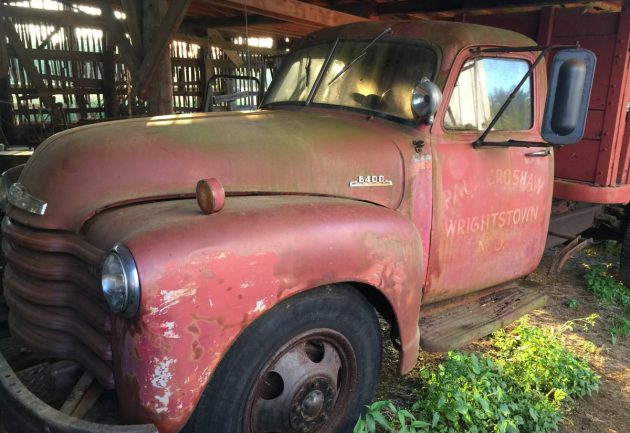
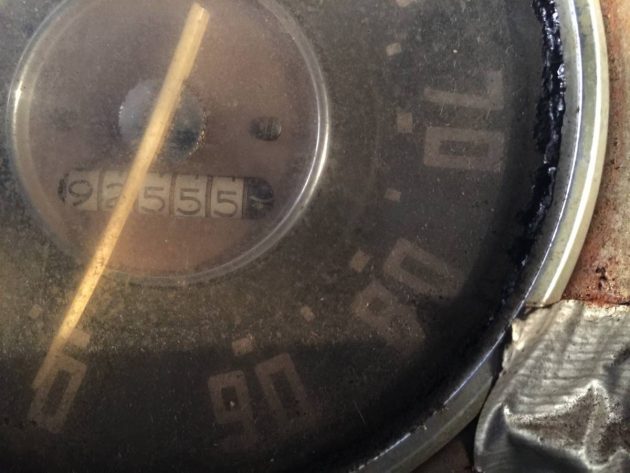
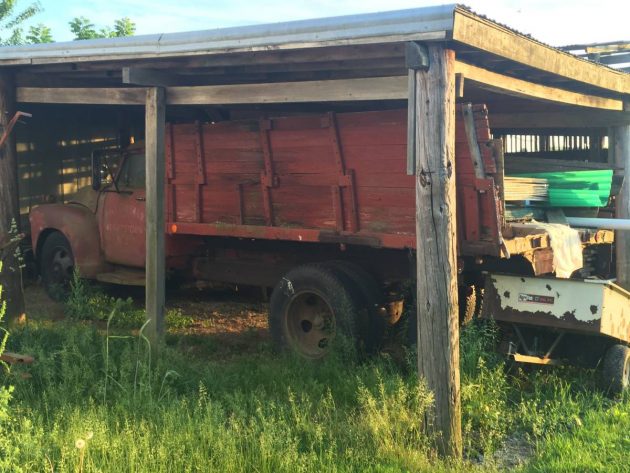

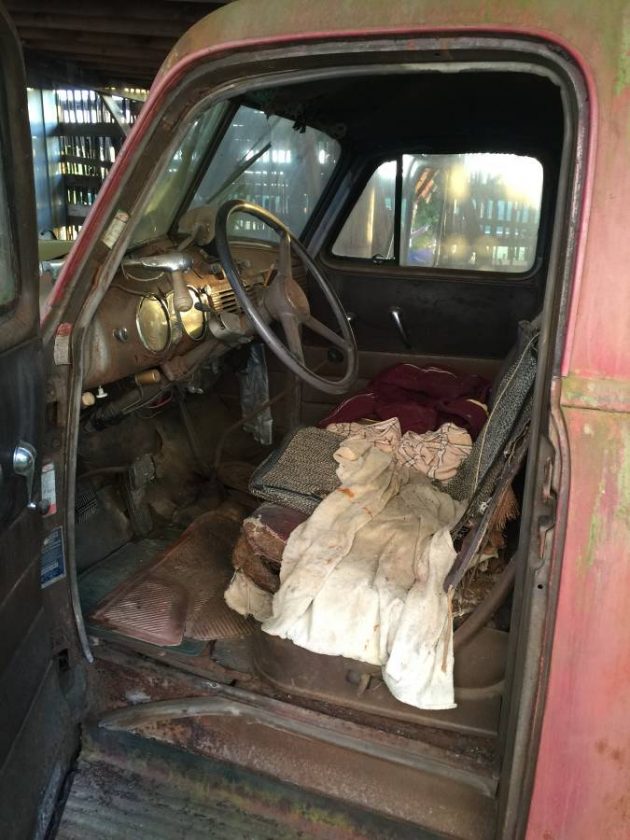
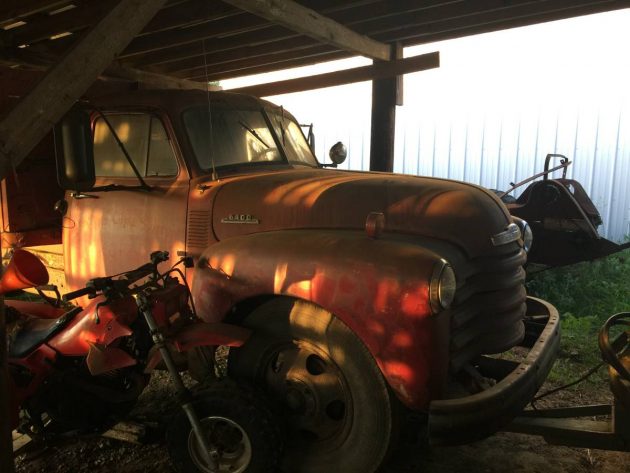






I just bought a 1952 6100 from a farmer in South Dakota while we were on vacation. It was painted and they were only using it in parades. Needs some carb work, tires and brakes. We shipped it to Florida and still feel like we got a great deal. Best souvenir we ever bought.
Great trucks that can still work have value.
I might be wrong but I don’t think an electromagnetic pulse could kill one of these. I can see it now, the only things on the road would be built before the mid 70s.
This thing would be worth more than a new super car.
Nicest truck I’ve seen on this site for a long time! The interior is just about perfect, aside from the seat, and even the dash is still the original color. Amazing. If this were here in central Cal it would be 3X the asking price. The sides (and bed) could be replaced without breaking the bank; the tires and tubes run around $300.00 apiece and a break job another $600.00 + -, so you could have an excellent work truck for under 5 grand. How could you beat that? It doesn’t have a dump bed or a 2-speed rear end though, so the modern uses are limited.
While I agree, where there’s farms, there’s trucks, but not all are in decent condition, including this one. Once in a while, you’ll come across a farmer that really cared for their equipment, but generally, the farmers I worked for and came in contact with, just considered the truck another machine, and appearance ( and safety) was secondary, and if it ran, they used it until it wouldn’t go, and pushed it into a corner. I’ve driven some pretty shoddy farm trucks (some I refused to drive) This appears to be a ’52. According to Wiki, the ’52 had a 90 mph speedo ( ya, sure) and maroon headlight and wiper knobs. Also, the ID plate ( in the door jamb?) looks black with silver letters, ’53, it was blue with silver letters. I’d think there would be a hoist. I’m sure many a farm boy shoveled off a load of grain with this truck. Don’t get me wrong, I like old farm trucks, had several myself, but only paid $200 for them , with a hoist ( and maybe a parts truck to boot) I’d think a modern drivetrain would be best, unless you have a farm, and are only going 6 miles to the feed mill. I bet there’s still a bunch of these out there, but supply is bound to dry up soon. If you are thinking about one, better get it now.
I don’t see any guides on the frame rails for a dump bed and no telltale knob on the dashboard either. I actually paid $250. for my ’41 2 ton flatbed dump (with a 2-speed diff), but that was in 1969! It had a 216 as well’, which worked fine back when people didn’t normally drive like they were training for the road races.
I think Howard over estimates the numbers of these type trucks that had dump beds…..many did but more did not. We have tilting decks that tip up the entire truck to unload grain here in the northwest. We even had a tilt deck in the port of LA that would tilt my entire 80,000 lb semi to unload alfalfa cubes and grain we used to haul from Utah. It was pretty “impressive” to see the semi tractor tilted 40 feet in the air. The 216’s were great engines until you missed a shift on a steep hill and over reved them………the “splashers” make a Big Bang when they come apart!!!!! Many of the trucks like this here were only used during harvest and have very low miles on them. Still lots of them around.
Hi Dave, being a semi-retired ( pun intended) truck driver for 35 years, I know all about loading and unloading trucks. I’ve seen it all. Yes, it is impressive to see a semi 40 feet in the air ( they unload potatoes like that too) but I’m talking about the little “mom and pop” elevators in these little towns, that trucks like this usually went to ( or came back from) with a load. Most that I went to were just a grate in the ground, and no hoist means you ( and a helper, if you’re lucky) drive the hand shovel, and shovel it off. No hoist, like on this truck, probably means the farm this truck came from was not a seed farm, and had no real use for a dump. Shoveling off loaded trucks gets old fast, and every seed farmer had a hoist on their truck.
Mine has a dump bed and two speed rear end that both work great. The insurance company said that because it is a dually it was commercial but we did get one to write it as a classic and give us 5K miles a year.
Glad yo hear that some insurance companies are willing to do that!
Looks much like the truck I drove through a closed garage door in about 1969 or 1970! Made quite a noise, almost like a bomb went off as it echoed and reverberated in the otherwise empty double car garage – and woke all the neighbors up at about 5:00 am!
Not sure about these bigger trucks, but pickups of that era are still very easy to get parts for, just need a catalog and a credit card. I restored a 51 GMC about 25 years ago, still had to go to junkyards then.
Overall it looks pretty good to me. Some rust but nothing that can’t be fixed quite easily. Most of these trucks ran the 216 although the 235 got popular as the trucks got bigger. I drove both and there wasn’t a heck of a lot of difference between the two as far as power was concerned. If you had 300 bushels of wheat in the box that was an 18,000 lb. payload. If you were lucky enough to have a 2 speed axle you might have some semblance of a chance of getting into top gear within five miles, as long as you didn’t have any hills to climb. You start off in Granny/Granny and rev that engine till you thought you were going to have six hood ornaments; you shifted the vacuum 2 speed to high position, clutched and let the increase in vacuum shift into the next gear, only to have that hopelessly underpowered motor floundering until it could get its wind up again. Split shift to 2L and go through it all over again. You got good at shifting gears and 2-speed axles. And things didn’t improve much over the years. We had a ’57 IH A160 with a BD 240 motor and it wasn’t much better than the neighbor’s ’51 Chevy, except that it stood a little taller. A lot of Fords with flathead V8s that weren’t better either except that the howling of the transmission told you who was coming down the road. Now a ’61 Chevy 70 series with a 348/5 spd. or a ’61 GMC 970 with a 351/5 spd. were movers. But then, you got a bigger box and hauled 400 bushels.
In our hilly West Country………stoping and going down hills loaded was more of an adventure in these old girls than trying to go fast.
Hi geomechs, you and I certainly are in “in the same gear” here, as few people have actually spent any time in an “underpowered” ( overweight) truck. Today, driver’s are spoiled with 500+ hp engines, automatics and cruise control, but years ago, driving these with a load took a lot of finesse, and patience. I started my trucking career with gas motors, and they are a challenge. On some hills, by the time you downshift, it’s already too late, and you may as well skip the next gear and grab 2 down, and settle in for a slow ride. It wasn’t until I drove a Mack turbocharged diesel ( some non-turbo diesels were just as bad as gas jobs) that I really got a sense of power. Back then, you didn’t have the boss calling you on the cell phone, “are you done yet” crap, and you got there when you got there. All the boss cared about, was you got there safe, and not how fast you could do it. I miss those times.
Morning. I was just thinking: Hauling water in a gutless truck. I worked for a local contractor and he would have me haul water for him. ’58 Chevy with a 235/4 speed, and 2-spd. Yes, a 1,000 gallon water tank has got baffles but the water still sloshes around and decides to slosh backwards when you’re grabbing the next gear. A lot of local farmers hauled water for their households and they got pretty good at it but a 16 year old greenie like me, hauling water after school and on weekends was definitely a challenge. A flashback: local school teacher in her Valiant; stop signs were eight-sided and a pretty red color but that didn’t mean that SHE had to stop. That pimply-faced kid driving that water truck is a courteous young man and he’ll let me be on my way… Panic stop! Water sloshes forward–I’m in the middle of the intersection. She’s giving me dirty looks; sure glad I don’t have her in any of my classes…
One of my dad’s truck companies had milk tankers. Servicing dairy farms throughout eastern Washington and Northern Idaho in the 50’s-60’s in every weather condition year around, mostly dirt mud roads with a full size Kenwort truck and trailer was a real experiance but when you add the fact that Stainless milk tanks can not have baffles multiplies the adventure. He lost several 1/2 full trucks because of dips in the road that caused the milk to shift and rolled the truck. One spot in particular on US 95 near Sandpoint got 2 of them. The road kind of twisted in a corner, the combination was deadly. I also remember hauling gravel on the weekend for a boss to his summer home on Courdelane lake. The delivery truck, a 65 (or so) chevrolet 3/4 ton pickup we would load to the top of the bed, off I would go over the rolly Paloose hills. If it did over 45 MPH the front end of the truck would come off the road by a foot or two at the crest…….another adventure.
Without a Hydrovac they would be impossible to stop. Mine had a vacuum accumulator tank that made stopping with a stalled engine reliable and safe – about as good as air brakes I’d say. The main thing is the judicious use of engine braking and keeping in the right gear to avoid heat-related brake fade. Nothing wrong with the older trucks, really. You just have to know how to drive em.